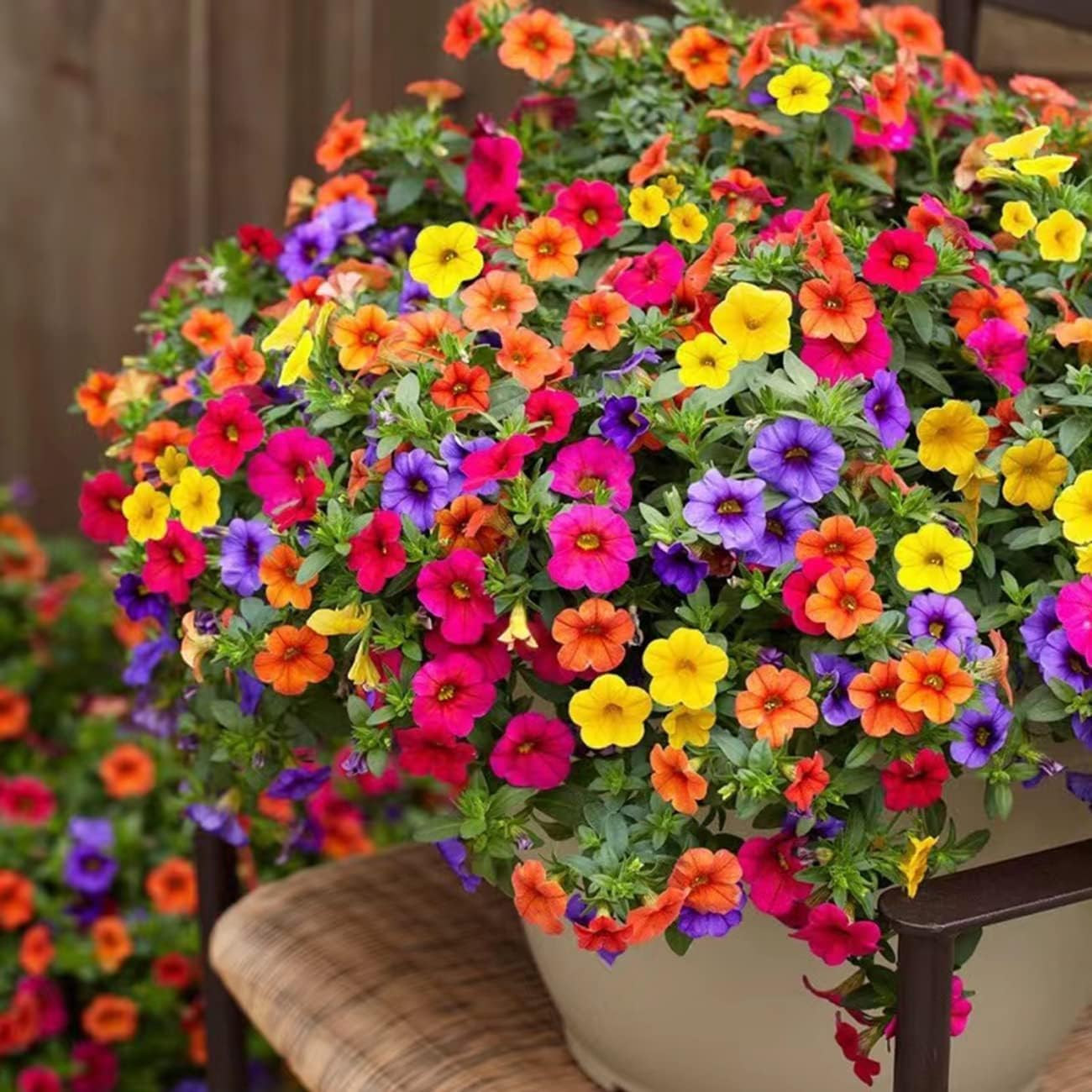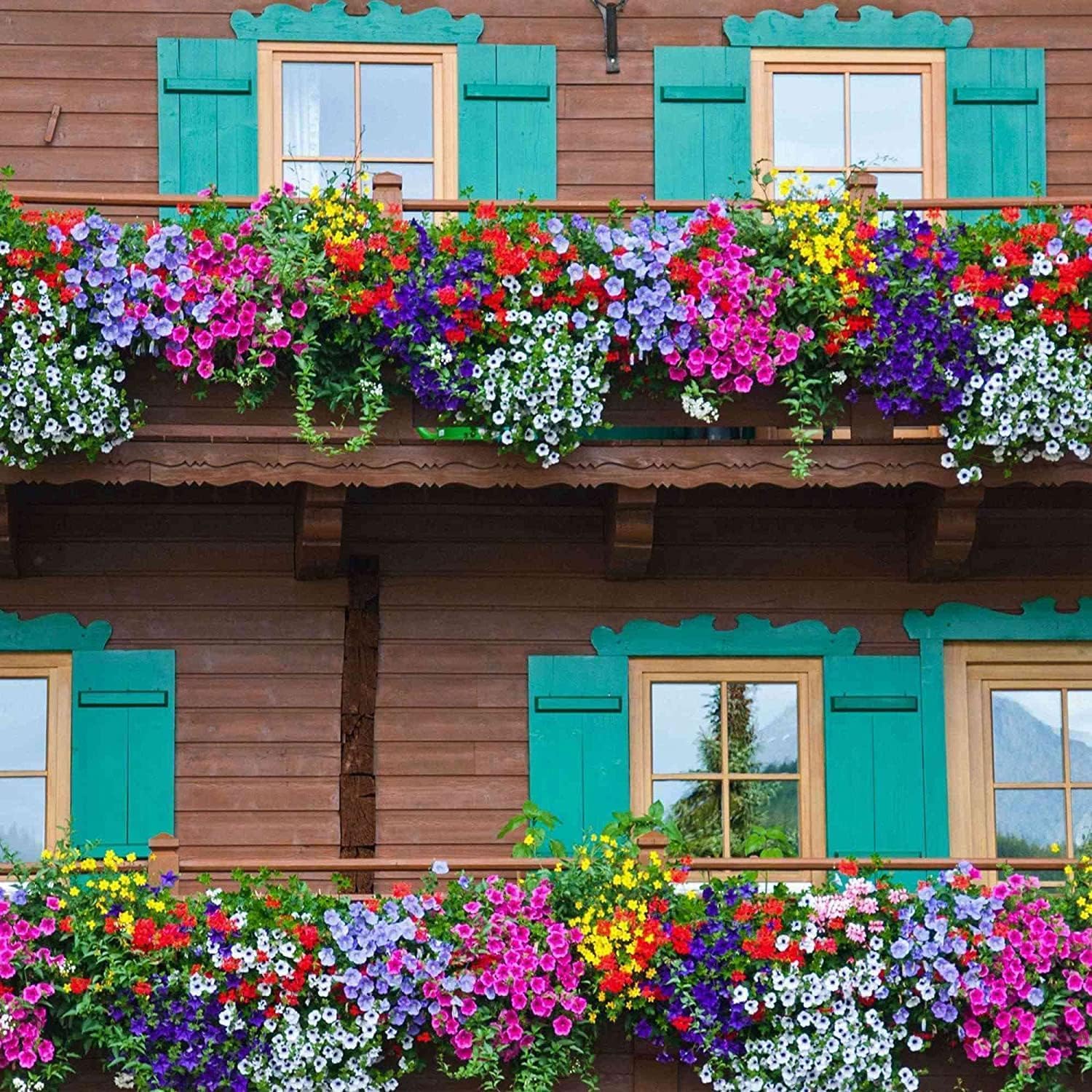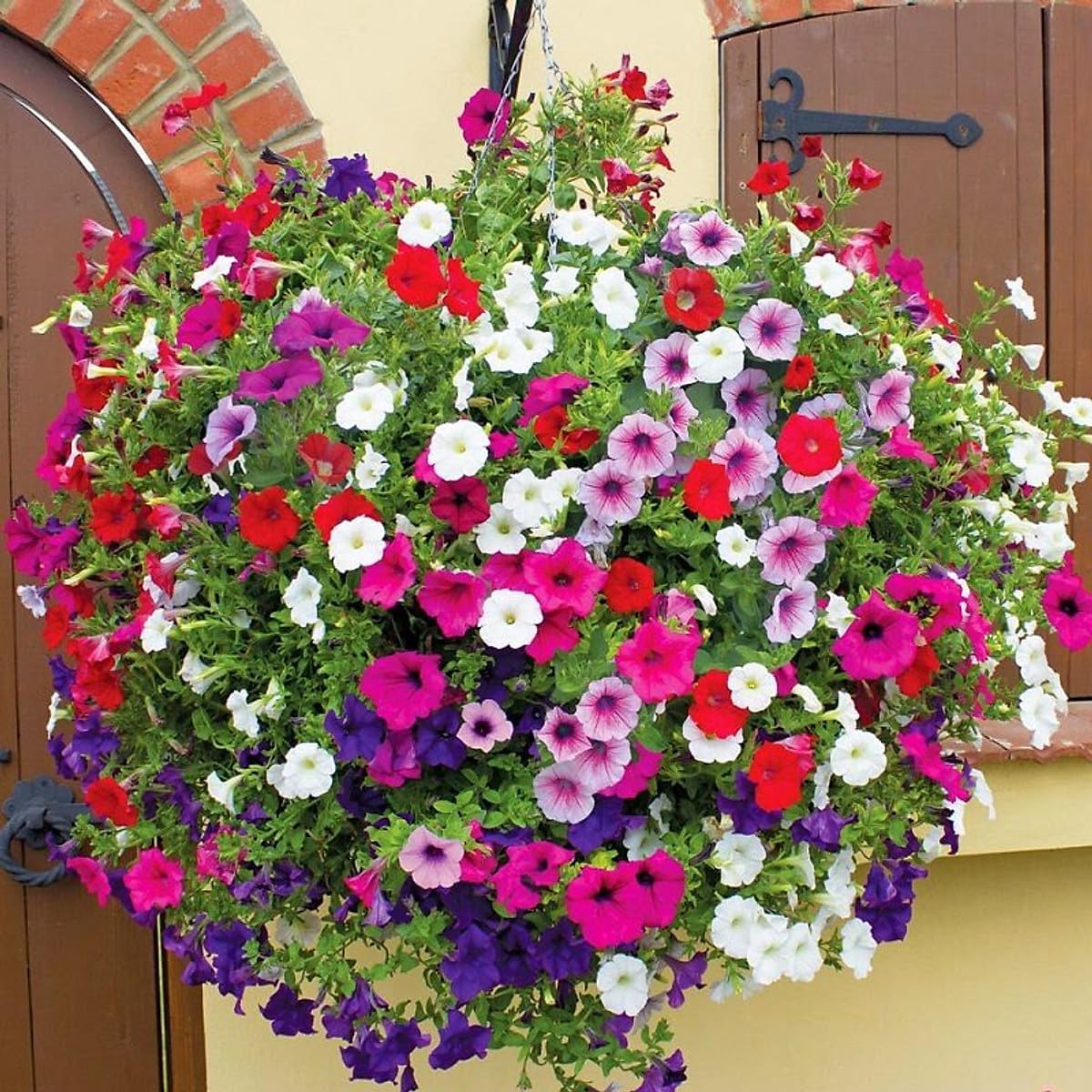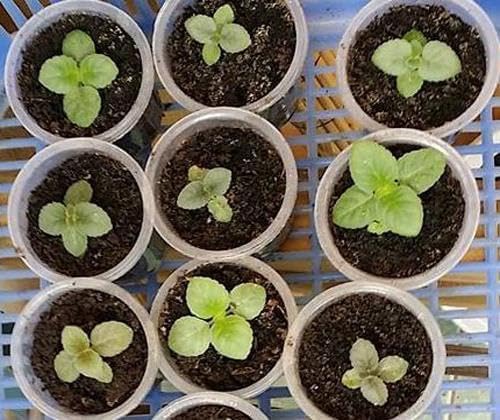Description
- ✨ Add waves of red, rose, pink, violet, yellow, orange, white and lavender all summer long to your containers, hanging baskets or borders with this stunning dwarf mix. Silky trumpet shaped flowers bloom heavily on top of bright green spreading plants.
- 🦋 Excellent for bees, butterflies, and hummingbirds.
- 🌱GROWING INSTRUCTIONS: For earlier blooms sow seeds indoors under bright light 8-10 weeks before your last average frost date. Press them into the soil but do not cover them with soil because they need light to germinate. Transplant outdoors after last frost and water well until established. Can also direct sow outdoors in prepared seed bed after all danger of frost has passed.
- 🌿 PACKAGING – Our seeds are carefully packed in packaging that is resistant to tears and moisture, ensuring their freshness for a longer duration
- 💬 If the package is damaged, contains an insufficient quantity, or fails to facilitate germination, please contact us for a prompt replacement. If you want customer service where you will talk directly to the owner for any concerns, we are the company for you!
Product Description
Petunia Mix
Flowering Plants Known for their prolific blooming throughout the spring, summer, and fall, providing continuous color to the garden. These flowers are typically annuals, completing their life cycle in one growing season.
Petunia mix can be planted in garden beds, containers, hanging baskets, and window boxes, adding beauty to various settings.
These flowers are attractive to pollinators like bees and butterflies
They are relatively easy to grow and care for, making them suitable for both beginner and experienced gardeners.
Proper sunlight, well-draining soil, and regular watering are essential for their healthy growth and flowering.
Removing spent flowers encourages more blooms and helps maintain a tidy appearance.
Regular watering is necessary, but be cautious not to overwater, as petunias dislike soggy soil.
Petunias are also popular choices for edging, borders, and mass plantings due to their prolific nature.
Color: Pink, purple, yellow, red, orange, green, white
About Our Seeds
- Seeds packed in tear and moisture-resistant packaging
- Stored in controlled, dry facility.
- Always packed for current and upcoming seasons.
- Non-GMO, Untreated
- True to the variety advertised.
- Growing Instructions Included
GROWING INSTRUCTIONS
Start your petunia seeds at least 10 to 12 weeks before your zone’s projected last frost date. Here are the steps for planting petunias from seed:
- Spread the tiny petunia seeds on top of a moist seed-starting mix. Gently press them down, but do not bury them as they need light to germinate.
- Then, cover the container with clear plastic, and put it in a warm spot but out of direct sunlight. You should see seedlings within seven to 10 days.
- Once seedlings emerge, remove the plastic.
- When the seedlings have three true leaves, they can be transplanted into their own pots until they are ready to be transplanted outdoors.
LIGHT
Most petunia varieties like full sun, meaning at least six hours of direct sunlight on most days. But in the heat of summer, partial shade (especially from the strong afternoon sun) will help to keep them refreshed and blooming better.
PLANTING AND SOIL
Petunias prefer a light, fertile soil that provides good drainage. They can tolerate a variety of soil types as long as they are well-draining. Plus, they like a slightly acidic soil pH. Plant petunias outside after the threat of frost has passed, as the soil must be warm and workable. Plants should be spaced roughly a foot apart.
WATER
Like many flowering annuals, petunias don’t like to be dry for long periods. But they also don’t like to sit in soggy soil, which can rot their roots. Plus, too much water can result in leggy plants with few flowers. In general, it’s sufficient to soak beds weekly with 1 to 2 inches of water when you don’t have rainfall. However, some spreading types of petunias and petunias in pots typically need more frequent and deep watering. Try not to let the soil dry out more than 2 inches down.
TEMPERATURE AND HUMIDITY
The ideal temperatures for petunias are roughly 60 degrees Fahrenheit to 75 degrees Fahrenheit during the day and 55 degrees Fahrenheit to 65 degrees Fahrenheit at night. They can tolerate temperatures all the way down to about 40 degrees Fahrenheit, but frost and freezing temperatures will damage and ultimately kill the plants. Low to moderate humidity levels are best for these flowers.
FERTILIZER
Feed petunias at the time of planting with a balanced fertilizer. It’s also helpful to work some compost into the soil. Then, starting in July and continuing until the plants decline in the fall, fertilize every two to three weeks with a liquid fertilizer made for flowering plants. Some of the spreading types of petunias need weekly fertilization, so be sure to check your plant’s individual care instructions.
PRUNING
When planting young petunias, pinch back the stems to encourage more branching and a fuller plant. How far back to pinch depends on the plant. If it is a short, stocky seedling, just pinch an inch or less. But if the seedling is gangly, you can pinch back the stem by half.
EXCLUSIVELY FRESHNon-compliant or aged seeds are locally donated, minimizing waste. |
SAFE SEEDSNon-GMO, Heirloom, Untreated Seeds. |
SAVING TRADITIONWith mature plants, you have the opportunity to save seeds from your harvest and cultivate seeds year after year. |












Reviews
There are no reviews yet.